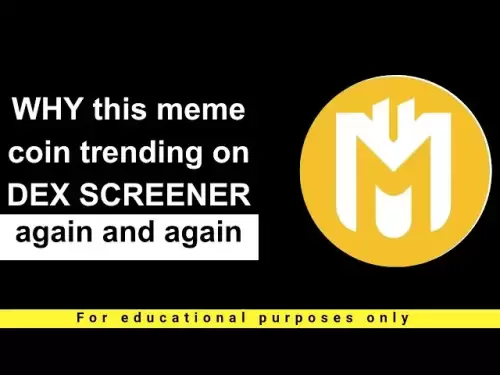-
 Bitcoin
Bitcoin $109,507.9823
0.43% -
 Ethereum
Ethereum $2,716.0274
3.79% -
 Tether USDt
Tether USDt $1.0003
-0.01% -
 XRP
XRP $2.3859
3.05% -
 BNB
BNB $665.2705
0.56% -
 Solana
Solana $154.6874
1.56% -
 USDC
USDC $1.0002
0.02% -
 TRON
TRON $0.2896
1.05% -
 Dogecoin
Dogecoin $0.1738
1.67% -
 Cardano
Cardano $0.6117
3.72% -
 Hyperliquid
Hyperliquid $40.3052
3.82% -
 Sui
Sui $2.9817
2.08% -
 Bitcoin Cash
Bitcoin Cash $505.0944
0.71% -
 Chainlink
Chainlink $14.0820
1.96% -
 Stellar
Stellar $0.2902
12.90% -
 UNUS SED LEO
UNUS SED LEO $9.0423
-0.34% -
 Avalanche
Avalanche $18.7084
1.54% -
 Hedera
Hedera $0.1714
6.33% -
 Shiba Inu
Shiba Inu $0.0...01218
2.48% -
 Toncoin
Toncoin $2.8261
1.24% -
 Litecoin
Litecoin $88.8228
1.59% -
 Monero
Monero $319.1344
2.71% -
 Polkadot
Polkadot $3.5479
2.69% -
 Dai
Dai $1.0001
0.00% -
 Ethena USDe
Ethena USDe $1.0010
0.06% -
 Uniswap
Uniswap $8.2690
6.49% -
 Bitget Token
Bitget Token $4.3622
1.19% -
 Aave
Aave $298.5989
2.11% -
 Pepe
Pepe $0.0...01042
1.97% -
 Pi
Pi $0.4663
1.15%
Does Trezor support Cardano staking
Trezor supports Cardano (ADA) staking through its Suite app, allowing secure delegation without exposing private keys.
Jul 09, 2025 at 06:42 pm
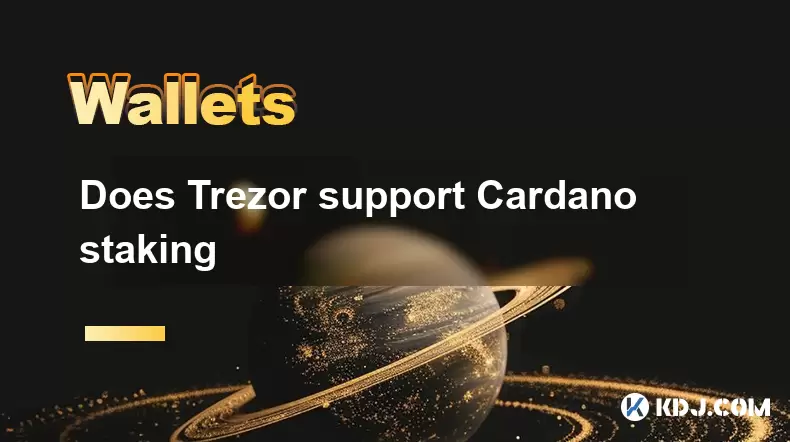
What is Trezor and Its Role in Cryptocurrency Storage?
Trezor is a well-known brand in the cryptocurrency hardware wallet space, developed by SatoshiLabs. It provides users with a secure offline storage solution for their digital assets. The device supports a wide range of cryptocurrencies, including Bitcoin, Ethereum, Litecoin, and many others. Its primary function is to store private keys securely, ensuring that funds are not exposed to online threats. This makes it a preferred choice among crypto enthusiasts who prioritize security over convenience.
The Trezor Model T and Trezor One are the two main models currently available. Both offer varying degrees of user interface and supported coins. Since its inception, Trezor has been continuously expanding the list of supported cryptocurrencies, aiming to provide a comprehensive solution for multi-chain asset management.
Understanding Cardano (ADA) and Staking Mechanism
Cardano (ADA) is a proof-of-stake blockchain platform designed with scalability, sustainability, and interoperability in mind. Unlike Bitcoin’s proof-of-work system, Cardano utilizes a staking mechanism, where users can delegate their ADA to stake pools or operate their own pool to earn rewards. This allows ADA holders to participate in network consensus and earn passive income without compromising the security of their holdings.
Staking involves locking up ADA tokens to support the network's operations. Rewards are distributed periodically, typically every epoch (which lasts about five days on the Cardano network). While staking does not require users to relinquish ownership of their tokens, it does require an active and compatible wallet to manage delegation and claim rewards.
Does Trezor Support Cardano (ADA)?
Yes, Trezor officially supports Cardano (ADA) through its firmware updates and integration with the Trezor Suite software. Users can store, send, receive, and manage their ADA directly from the Trezor wallet interface. However, the question arises: does Trezor support staking for Cardano?
As of the latest updates, Trezor allows users to stake ADA directly via the Trezor Suite application. This means you can connect your Trezor device, open the ADA wallet, and choose a stake pool to delegate your tokens. This process ensures that the private keys remain securely stored within the hardware wallet while allowing interaction with the Cardano blockchain for staking purposes.
How to Stake Cardano (ADA) Using Trezor
To stake ADA using a Trezor wallet, follow these steps:
- Ensure your Trezor firmware is updated: Go to the Trezor Suite settings and check for any available firmware updates.
- Install the latest version of Trezor Suite: Download and install the most recent version from the official Trezor website.
- Connect your Trezor device: Use the USB cable provided and ensure your device is unlocked.
- Select ADA from the wallet dashboard: In Trezor Suite, navigate to the list of supported cryptocurrencies and select ADA.
- Access the staking section: Within the ADA wallet interface, there will be an option to delegate or stake your ADA.
- Choose a stake pool: Browse available pools, compare metrics like saturation, margin, and pledge, then select one to delegate to.
- Confirm the delegation: Follow the prompts on your Trezor device to confirm the transaction securely.
Once delegation is confirmed, your ADA will begin earning staking rewards at the next reward distribution cycle. You can monitor your staking status and earnings directly within the Trezor Suite interface.
Potential Limitations and Considerations
While Trezor offers native support for ADA staking, there are certain limitations and considerations to keep in mind. For instance, the staking process requires an internet-connected computer, as Trezor Suite must communicate with the Cardano blockchain. Additionally, if you wish to switch stake pools, you’ll need to initiate a re-delegation transaction, which may incur a small network fee.
Another point to note is that staked ADA remains liquid, meaning you can spend or transfer it at any time. However, doing so will cancel your current delegation and stop future rewards until you re-delegate. Also, unlike some third-party wallets like Daedalus or Yoroi, Trezor does not offer advanced analytics or detailed performance metrics for stake pools, which might be a drawback for more experienced stakers.
Frequently Asked Questions
Q1: Can I stake ADA on Trezor without connecting to a computer?
No, staking ADA via Trezor requires the use of the Trezor Suite desktop application, which must be run on a computer connected to the internet.
Q2: Is there a minimum amount of ADA required to stake on Trezor?
There is no minimum threshold to start staking ADA. Even a single ADA token can be delegated to a stake pool.
Q3: Does staking ADA on Trezor expose my private keys?
No, your private keys never leave the secure environment of the Trezor device during the staking process. All signing operations occur within the hardware wallet itself.
Q4: Are staking rewards automatically claimed on Trezor?
Yes, once you delegate your ADA, rewards are automatically credited to your wallet balance after each epoch, provided the stake pool performs as expected.
Disclaimer:info@kdj.com
The information provided is not trading advice. kdj.com does not assume any responsibility for any investments made based on the information provided in this article. Cryptocurrencies are highly volatile and it is highly recommended that you invest with caution after thorough research!
If you believe that the content used on this website infringes your copyright, please contact us immediately (info@kdj.com) and we will delete it promptly.
- BlockDAG Leads the Crypto Pack: A 2025 Outlook on BlockDAG, Cardano, Litecoin, and Polkadot
- 2025-07-10 10:50:12
- ONDO Price Watch: Traders Eye Key Resistance for Potential $3 Target
- 2025-07-10 10:50:12
- Bitcoin vs. the Brazilian Real: Navigating Volatility in a Tariff War
- 2025-07-10 11:10:12
- VC Firms, Bitcoin, and Funding: A New York Minute on the Future of Crypto
- 2025-07-10 11:10:12
- Cronos (CRO) Jumps 16% on ETF Buzz: A NYC Take
- 2025-07-10 11:15:12
- Binance, Treasury, and IPOs: Navigating the Crypto Landscape in 2025
- 2025-07-10 11:30:12
Related knowledge

How to find a specific receiving address on my Trezor
Jul 09,2025 at 10:36pm
Understanding the Purpose of a Receiving AddressA receiving address is a unique identifier used in blockchain networks to receive cryptocurrency. Each...

How to connect Trezor to Rabby wallet
Jul 09,2025 at 05:49am
What Is Trezor and Rabby Wallet?Trezor is a hardware wallet developed by SatoshiLabs that allows users to securely store their cryptocurrency assets o...
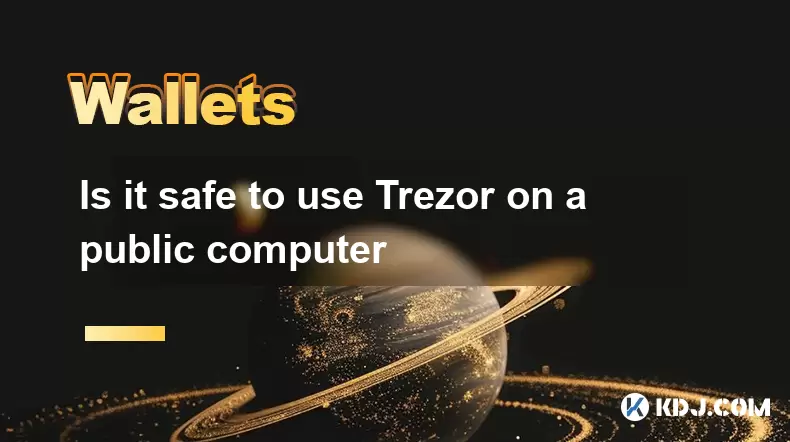
Is it safe to use Trezor on a public computer
Jul 09,2025 at 08:56pm
Understanding the Risks of Using Trezor on a Public ComputerUsing a Trezor hardware wallet is generally considered one of the most secure methods for ...

What happens if I forget my Trezor passphrase
Jul 09,2025 at 03:15am
Understanding the Role of a Trezor PassphraseIf you use a Trezor hardware wallet, you may have set up a passphrase as an extra layer of security beyon...
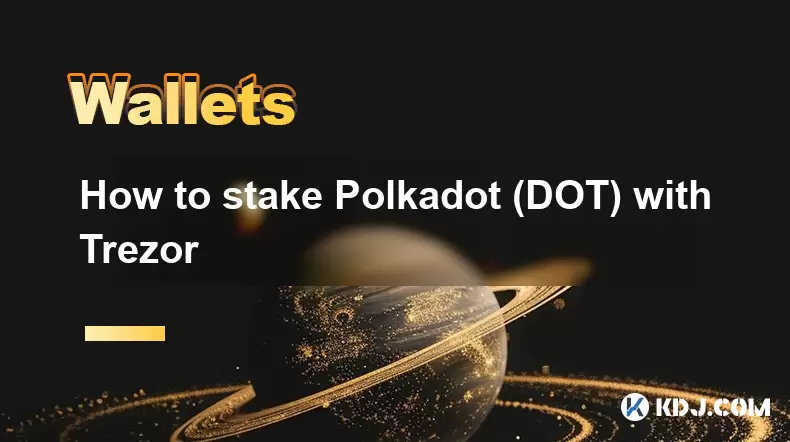
How to stake Polkadot (DOT) with Trezor
Jul 09,2025 at 09:42pm
Understanding Polkadot (DOT) StakingStaking Polkadot (DOT) allows users to participate in network validation and earn rewards. Unlike traditional proo...
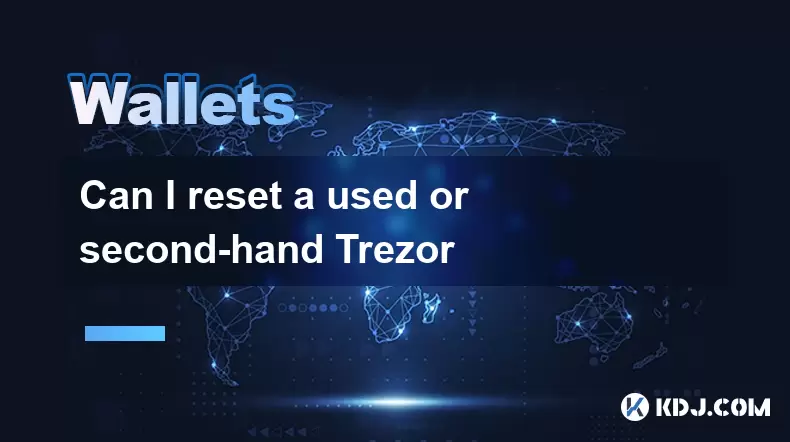
Can I reset a used or second-hand Trezor
Jul 09,2025 at 11:49am
Understanding the Reset Process for a Used or Second-Hand TrezorIf you have acquired a used or second-hand Trezor wallet, one of the first things you ...

How to find a specific receiving address on my Trezor
Jul 09,2025 at 10:36pm
Understanding the Purpose of a Receiving AddressA receiving address is a unique identifier used in blockchain networks to receive cryptocurrency. Each...

How to connect Trezor to Rabby wallet
Jul 09,2025 at 05:49am
What Is Trezor and Rabby Wallet?Trezor is a hardware wallet developed by SatoshiLabs that allows users to securely store their cryptocurrency assets o...

Is it safe to use Trezor on a public computer
Jul 09,2025 at 08:56pm
Understanding the Risks of Using Trezor on a Public ComputerUsing a Trezor hardware wallet is generally considered one of the most secure methods for ...

What happens if I forget my Trezor passphrase
Jul 09,2025 at 03:15am
Understanding the Role of a Trezor PassphraseIf you use a Trezor hardware wallet, you may have set up a passphrase as an extra layer of security beyon...

How to stake Polkadot (DOT) with Trezor
Jul 09,2025 at 09:42pm
Understanding Polkadot (DOT) StakingStaking Polkadot (DOT) allows users to participate in network validation and earn rewards. Unlike traditional proo...

Can I reset a used or second-hand Trezor
Jul 09,2025 at 11:49am
Understanding the Reset Process for a Used or Second-Hand TrezorIf you have acquired a used or second-hand Trezor wallet, one of the first things you ...
See all articles


























